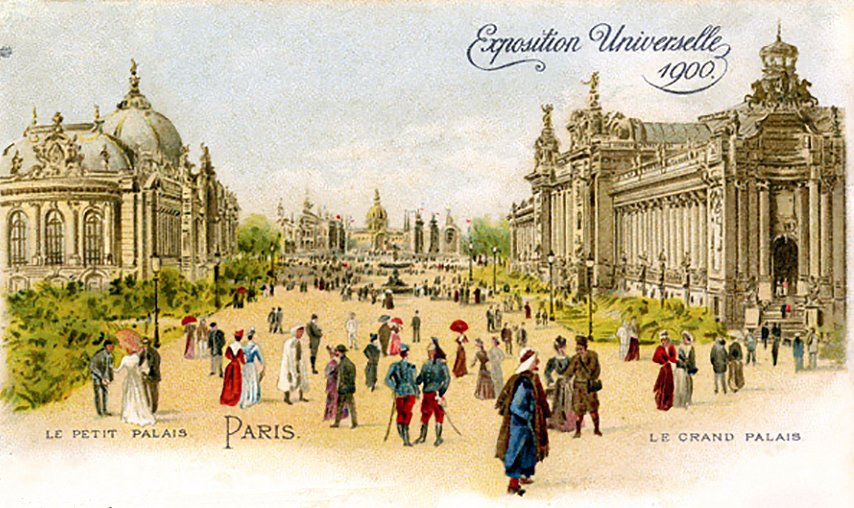The audio version of this article was first shared in Episode 41: A Bookchat about Come Down Somewhere with Jennifer L. Wright & a Review of The Dress Shop on King Street by Ashley Clark
In today’s Pinch of the Past, we will be looking at the 1900 Paris Exposition which was a world’s fair held in Paris, France. The purpose of this event was to celebrate the achievements of the past century and look forward to the 20th century, and featured exhibits from 40+ countries.

How it started.
France held an incredible exposition in 1889 (this is when the Eiffel Tower was built) and they basked in the glory of this event for the next three years; however, in June of 1892, Germany announced that they were planning an international exposition which would be scheduled in 1900 in honor of the new century. France was appalled that any country, let alone their rival Germany, would take the star of the show of 1900 so they planned their own, and–without apology–invited 56 nations, including Germany.
Entering the grounds

The event spanned through the first Parisian summer of the 20th century. The entrance was a 770 square foot, perforated iron dome called the Porte Monumentale. An average of 60,000 people per hour entered through this dome which was also capable of sheltering 2,000 in the event of rain.
Location, Location, Location

The exposition was located on the banks of the Seine River and covered 280 acres. It was open from 14 April to 12 November and was visited by more than fifty million people. Several international congresses and events were held at the Exposition, including the 1900 Summer Olympics.
1900 Summer Olympics Games

The Bois de Vincennes—a large area set aside for sporting events—hosted the 1900 Summer Olympics.
This was not only the second modern Olympics games ever held, but it was the first to be held outside Greece. Oddly enough, the term “Olympic Games” was replaced by “International physical exercises and sports competition” in the official report of the Exposition.
When newspapers reported on the competitions they used terms like: “International Championships,” “International Games,” “Paris Championships,” “World Championships” and “Grand Prix of the Paris Exposition.” In fact, the International Olympic Committee had no representation or control over the events. Records come from various sources, listing different events, which adds further confusion to what was the Paris 1900 Olympics.

Still, data shows that 997 competitors took part in nineteen different sports. These included women competitors for the first time. Some of the events were the first and only time to be held in what was considered Olympic history. These one-time events include a 660 ft swimming obstacle race, underwater swimming, motorcycle and automobile races, angling, ballooning, croquet, and cricket.

Of the competing athletes, 72% were provided by France which is 720 of the 997. Needless to say, they won the most gold, silver and bronze medal placings. However, the country to come in second for the largest number of wins was that of the United States with just seventy-five of the 997 participating athletes.
In another race, the winner was a pigeon who flew from Paris to Lyon in four and a half hours (which according to Google maps is about 28 miles.)
Other interesting competitions included a balloon competitions race. The winner of this race traveled all the way from Paris to Russia—a total of 1,196 miles—in 35 hours and 45 minutes.

In the next part of this Paris Exposition Series, we will be looking at the different kinds of exhibits. That Pinch of the Past will be part of Episode 42: A Bookchat about Beneath the Bending Skies with Jane Kirkpatrick & a Review of The Red Canary by Rachel Scott McDaniel.


